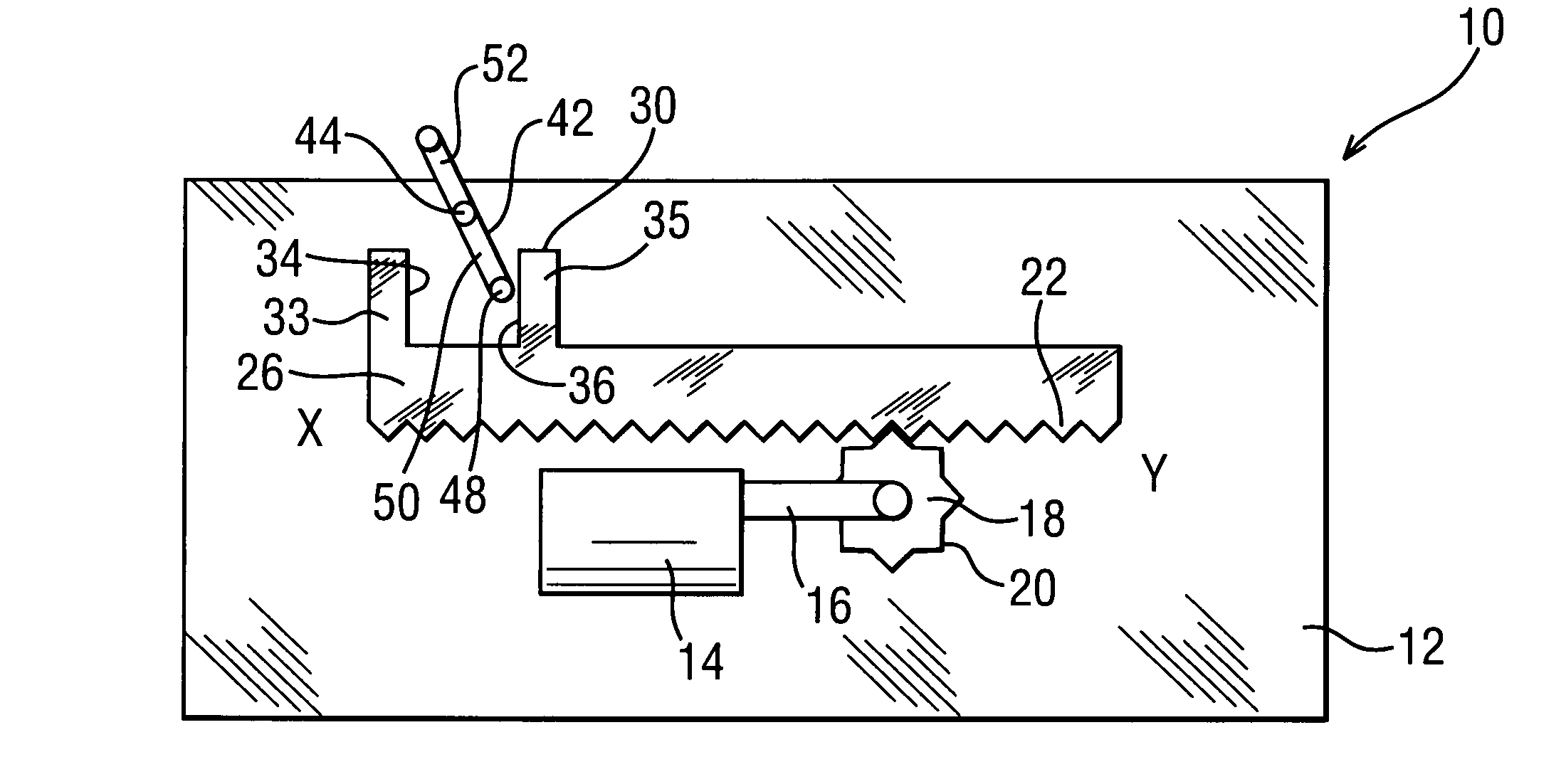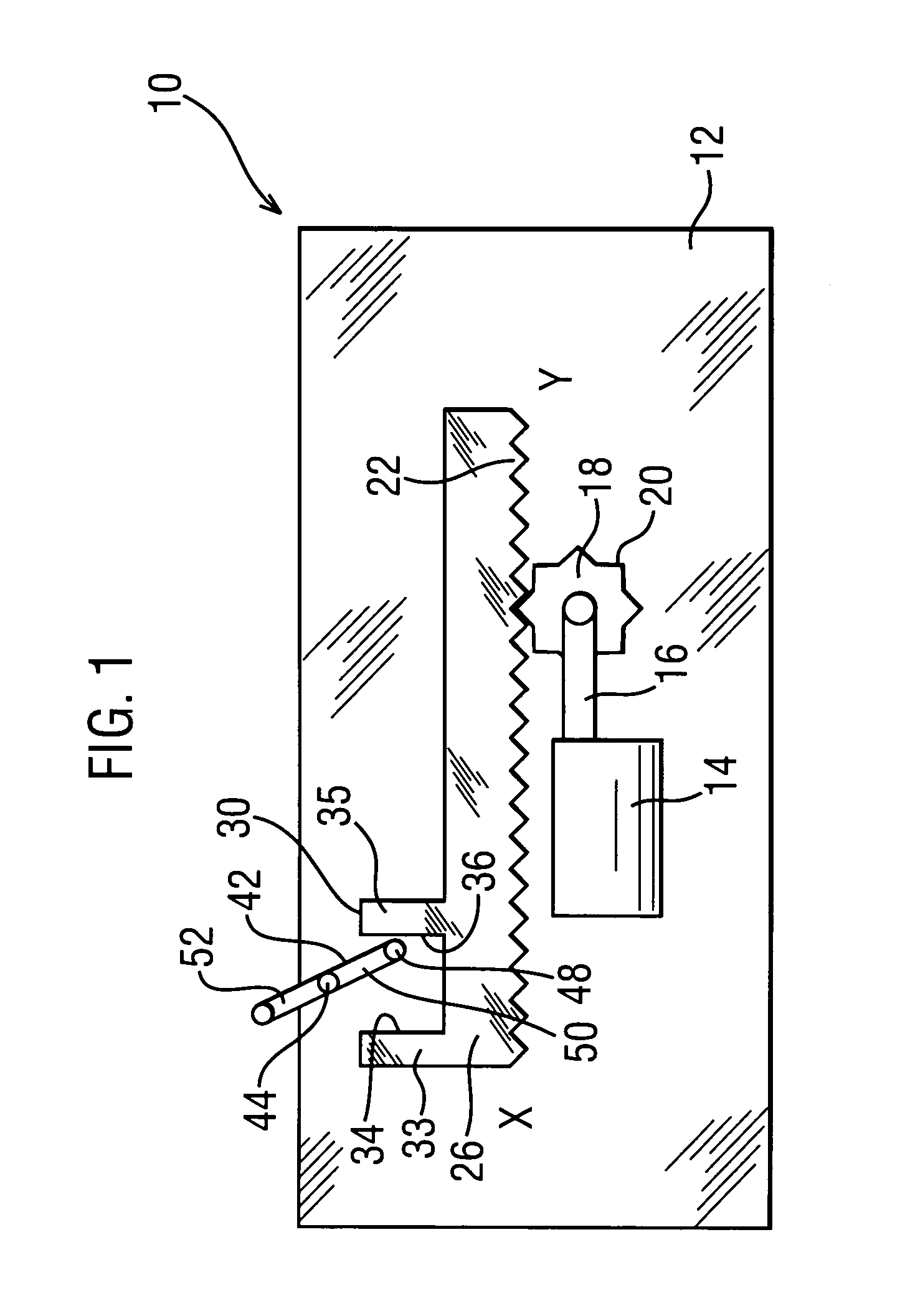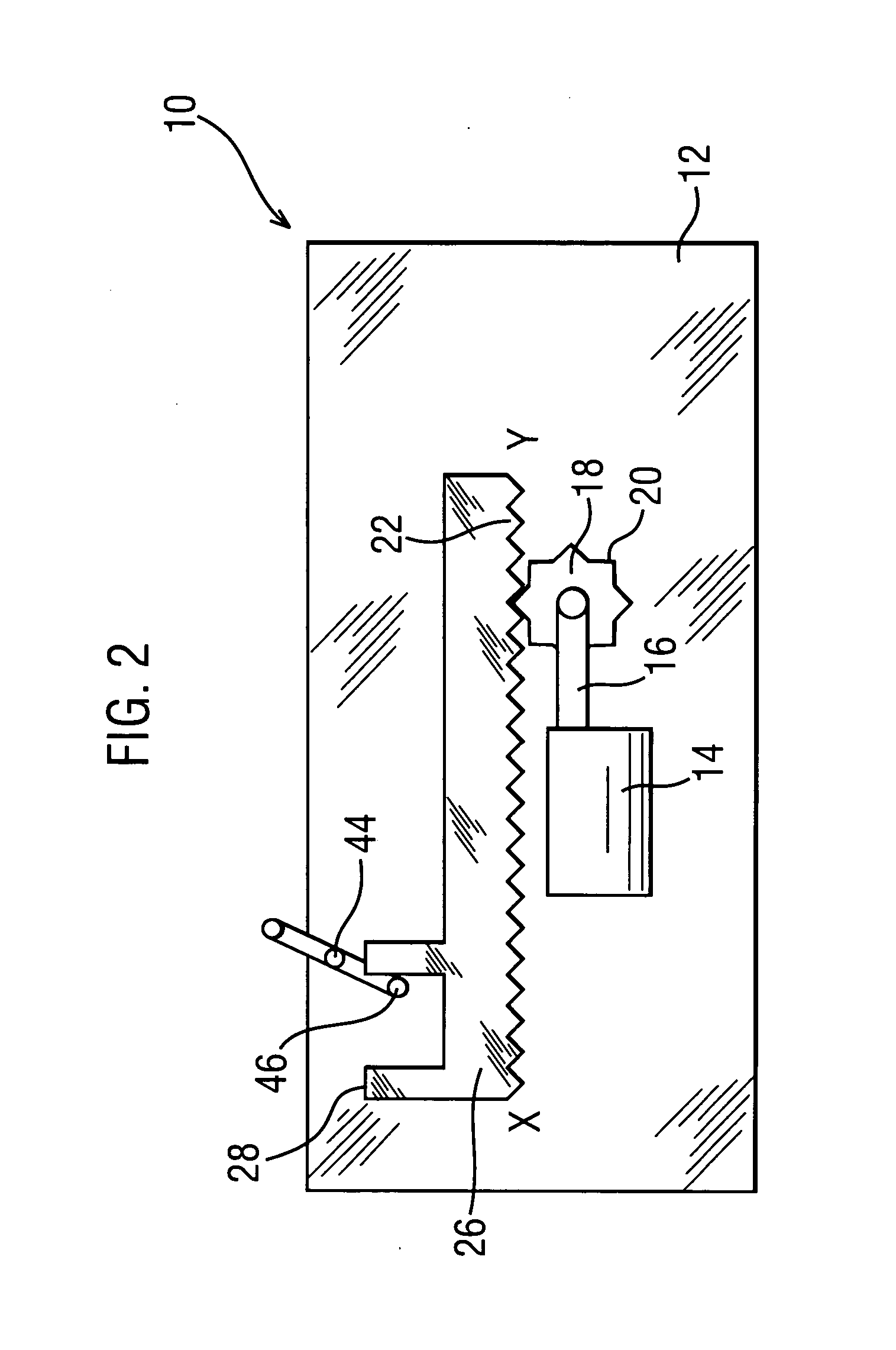Actuator for a vehicle door latch
a technology for actuating vehicles and door latches, which is applied in the direction of passenger lock actuation, electrical locking circuits, mechanical apparatus, etc., can solve the problems of increasing motor fatigue, reducing reliability, and methods of actuation, so as to reduce the power requirement of the motor, simplify the software, and minimize the complexity and the amount of wiring
- Summary
- Abstract
- Description
- Claims
- Application Information
AI Technical Summary
Benefits of technology
Problems solved by technology
Method used
Image
Examples
Embodiment Construction
[0053]FIG. 1 illustrates an actuator 10 having a stepper motor 14 fixed to an actuator body 12. A pinion 18 having pinion teeth 20 is mounted on and driven by a stepper motor shaft 16 of the stepper motor 14. The pinion 18 engages with a displacement member 26 by a rack 22 disposed on a surface of the displacement member 26.
[0054] The displacement member 26 is movable in relation to the actuator body 12 in a first direction towards a first end X and a second direction towards a second end Y. The displacement member 26 is shown in a rest position 30.
[0055] The displacement member 26 has a first abutment 33 located at the first end X. A second abutment 35 is spaced apart from the first abutment 33 to define opposing first and second abutment surfaces 34 and 36.
[0056] An output lever 42 is pivoted relative to actuator body 12 via a pivot 44 and includes an actuator arm 50 on one side of the pivot 44 and an output arm 52 on the other side of the pivot 44. The actuator arm 50 of the o...
PUM
 Login to View More
Login to View More Abstract
Description
Claims
Application Information
 Login to View More
Login to View More - R&D
- Intellectual Property
- Life Sciences
- Materials
- Tech Scout
- Unparalleled Data Quality
- Higher Quality Content
- 60% Fewer Hallucinations
Browse by: Latest US Patents, China's latest patents, Technical Efficacy Thesaurus, Application Domain, Technology Topic, Popular Technical Reports.
© 2025 PatSnap. All rights reserved.Legal|Privacy policy|Modern Slavery Act Transparency Statement|Sitemap|About US| Contact US: help@patsnap.com



